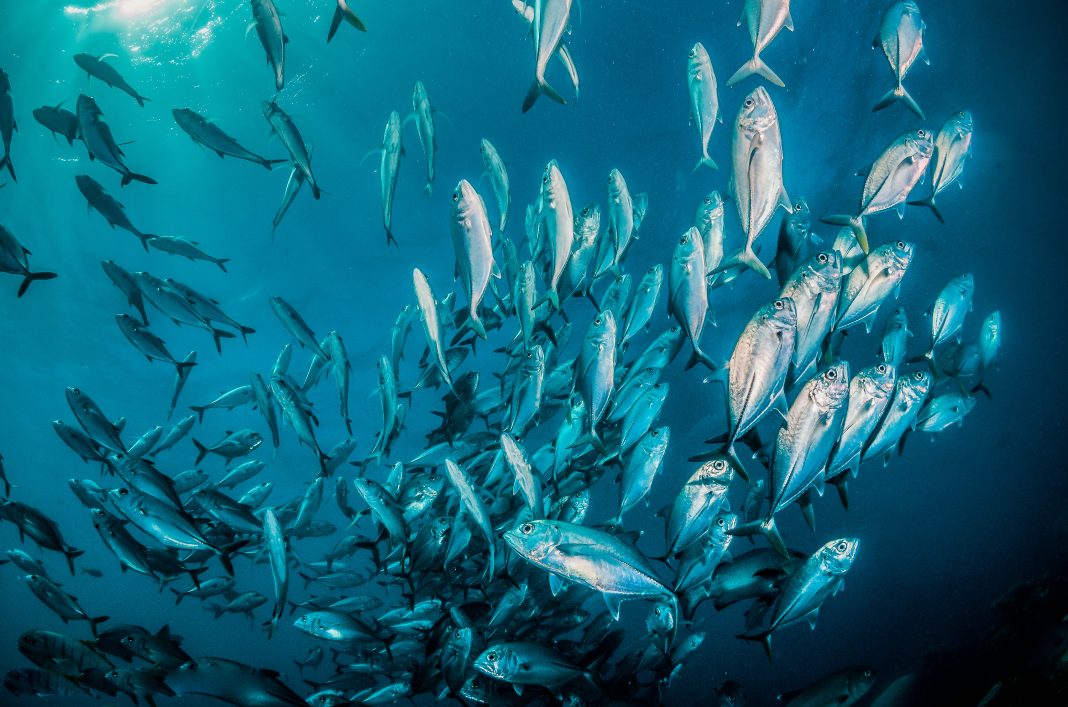Professor Holly Shiels, from the University of Manchester, is the Director of the Company of Biologists and the President of the Fisheries Society of the British Isles. She charts a toxic tide by tracing the path of pollutants from fish hearts to human cardiovascular health
It’s widely known that pollutants damage our oceans. But after researching the effects of an oil spill on the health of fish hearts, Professor Holly Shiels made an alarming discovery – our own hearts are affected in the same way.
An explosion at the Deepwater Horizon oil rig off the southern coast of the United States in 2010 unleashed nearly 5 million barrels of oil into the Gulf of Mexico over an excruciating 87 days. This catastrophic event caused one of the most severe ecological disasters in history, devastating the marine environment and obliterating countless forms of life. The scale of environmental devastation was unprecedented, leaving a lasting scar on the region’s fragile habitat.
A research team at the University of Manchester studied the effects of this colossal spill on the fish species swimming through crude oil, focusing on their hearts. It provided a clearer understanding of the impact a deeply polluted ecosystem can have on the cardiovascular health of a wide variety of fish.
But this was just the start of a much more extensive study with potentially huge implications. It was quickly discovered that the toxins found in crude oil are also found in much of the world’s air pollution – and that there are similarities between the way fish hearts and human hearts respond to these same toxins.
Environmental challenges: It’s the heart that matters
Different organisms cope with different environmental challenges in extraordinary ways. I’ve always been drawn to extreme environments and the way different species can adapt – to see animals survive when the odds are so squarely stacked against them. It was during the Deepwater Horizon oil spill study that a breakthrough was made in what was causing cardio defects.
It was found that phenanthrene, a low-molecular-weight polycyclic aromatic hydrocarbon, was responsible for cardiac dysfunction, as we could see it blocked ion channels that can lead to cardiac problems. It interferes with the movement of vital ions like potassium and calcium, escalating the risk of irregular heart rhythms.
Phenanthrene is a major component of crude oil, and there was already clear evidence that it was cardiotoxic in fish. But it’s also the second most abundant polycyclic aromatic hydrocarbon in the air we breathe. This begs the question: what effect can it have on mammalian species?
Fish: Proving a connection with mammals
In the study, ‘Global air pollutant phenanthrene and arrhythmic outcomes in a mouse model,’ mouse hearts were exposed to phenanthrene using a Langendorff apparatus that simulates blood flow, allowing for precise measurements of cardiac function.
Heart rates were also monitored with electrocardiograms to understand how phenanthrene affects rhythm and conduction. Additionally, the electrical responses of heart cells to varying phenanthrene concentrations were analysed. From this, a connection was established: phenanthrene induced irregularity in the rhythm of the mice’s heartbeats. What was seen in fish was, therefore, also true in mammalian hearts.
This reveals a chilling pattern: air pollutants trigger similar heart defects across various species of fish and mammals (and even invertebrates like crayfish!). Phenanthrene also disrupts critical elements like sodium that regulate the coordination of the heartbeat, leading to heart rhythm issues and potentially deadly arrhythmias.
It also suggests that similar dangers exist for humans exposed to these pollutants. The implications of this are enormous, especially considering 99% of the global population currently breathes air that contains higher levels of pollutants than is considered safe by the WHO, according to the WHO’s data.
This is especially concerning when considering the young, elderly, or anyone living with a heart condition that lives in these areas. More research is needed, as the results are based on healthy animal models and cells, but preliminary work with aged mice indicates they are indeed more susceptible to pollution-induced arrhythmias. Therefore, it’s essential to understand better how the heart responds in vulnerable groups to assess if they are at greater risk.
Public health policies: A warning sign
This connection has profound implications for public health policies and the regulation of air quality. Policymakers’ role is now crucial, as they can increase awareness and inform regulatory bodies that they need to consider air pollution, particularly the presence of phenanthrene, as a significant factor in evaluating cardiovascular risks.
Stricter air quality regulations and initiatives are also needed to prevent cardiovascular issues from stemming from exposure. For instance, The Company of Biologists’ Sustainability Initiative provides invaluable opportunities for biologists worldwide to collaborate on how to ingrain sustainability into scientists’ work.
Furthermore, there is a need for a more rigorous approach to environmental health policies. Regulations should account for the chronic impacts of low-level exposure to phenanthrene, indicating that current standards may underestimate potential risks to human health.
Prospects: Air pollution impacts on cardiovascular health
The impacts of air pollution on cardiovascular health in both aquatic species and terrestrial mammals are now evident. The time is now to understand the chronic effects of air pollutants’ toxicity and the damage they can inflict, with research helping shape regulatory policies and community practices to reduce pollution. But it’s also clear that safeguarding marine environments is important for protecting public health.
We must embrace conservation efforts that have a direct impact on public health. Actively engaging in practices that conserve marine life not only promotes a healthier environment but also nurtures a sustainable future for everyone. Humans are largely responsible for introducing these harmful particles. Therefore, we must support policies that preserve our natural world, acknowledging the deep connection between our well-being and the health of our planet.


